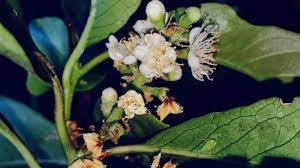The plant was named "Symplocos Mohananii" after Dr. Named N. Mohanan, who has discovered more than 33 new species from the Western Ghats.
Three researchers, one from the USA, have discovered a new plant in the Ponmudi Hills of Kerala, part of the Western Ghats, which is one of the eight most biodiverse plants in the world.
The plant was named "Symplocos Mohananii" after Dr. Named N. Mohanan, former senior scientist and now Scientific Advisor to the MS Swaminathan Research Foundation in Wayanad, Northern Kerala. Mohanan has worked for 37 years in the field of conservation of biodiversity and taxonomy (plant classification). Mohanan has discovered more than 33 new species from the Western Ghats.
Researcher Stephan J. and Akhil R are from the Jawaharlal Nehru Tropical Botanical Garden and Research Institute (JNTBGRI) in Palode (Thiruvananthapuram) and the 3rd researcher Peter W Fritsch, curator and scientist at the Botanical Research Institute of Texas, USA, have been researching on "Symplocos Mohananii" for more than four years.
"The tree is very endemic in nature and we were only able to discover five of them during our research. Although it is similar to other plants of the genus Symplocos, a critical analysis of its micro and macro properties later revealed that Symplocos Mohananii is a different species, "said R. Akhil.
Fritsch said the plant was seen from a hill about 3,000 feet above sea level." The plant has white flowers, but we have not yet been able to see the flowers open. The white flowers usually open at night. "
J Stephen said," Plants from this family are commonly known as sweet leaf plants locally and the bark of some species has been used to treat tribal skin diseases and also for dye-making. Symplocos Mohananii also has some medicinal properties , but detailed study is required."
As the number of plants is limited, they said their next task would be to find their large collection in deep forests. Though the researchers revealed their discovery last week, the research was published in New Zealand magazine Phytotaxa International in March.





The Brief. Sign up to receive the top stories you need to know right now.